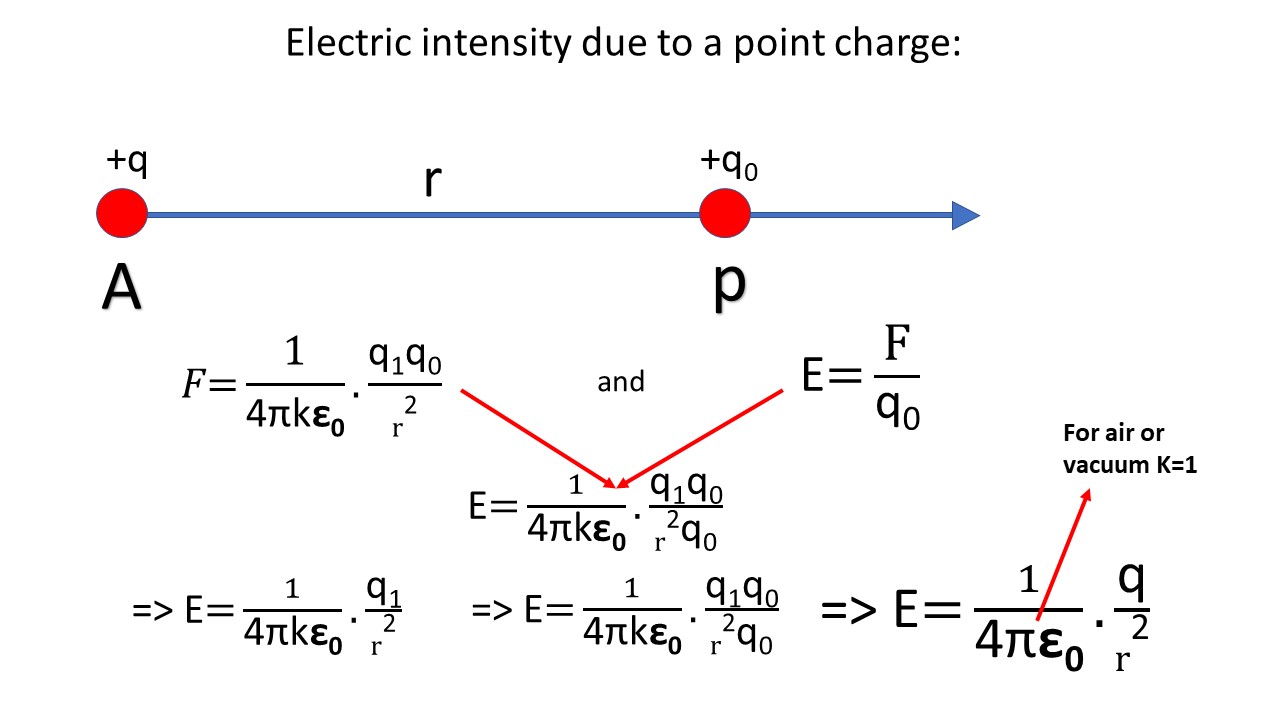The electric field from a point charge is a fundamental concept in electromagnetism that describes how charged particles interact with one another. This concept not only forms the basis of many scientific principles but also plays a crucial role in various applications in physics and engineering. Understanding how electric fields work can help us comprehend complex systems, from simple circuits to advanced technologies. In this article, we will delve deep into the characteristics, calculations, and implications of electric fields generated by point charges.
The idea of a point charge is an idealization where a charged particle is considered to have no dimensions, allowing us to simplify calculations. This simplification leads to a clearer understanding of how charges create electric fields in their surroundings. We'll explore the mathematical framework that governs this phenomenon and discuss various real-world applications that stem from this fundamental principle.
Moreover, we will address the significance of electric fields in both theoretical and practical scenarios. By the end of this article, readers will have a solid grasp of electric fields generated by point charges, including their properties, visualization, and calculation methods. Let's embark on this journey to unravel the mysteries of electric fields!
Table of Contents
- 1. Introduction to Electric Fields
- 2. What is a Point Charge?
- 3. Definition of Electric Field
- 4. The Equation of Electric Field
- 5. Direction of Electric Field
- 6. Visualization of Electric Fields
- 7. Applications of Electric Fields from Point Charges
- 8. Conclusion
1. Introduction to Electric Fields
In physics, an electric field is a region around a charged particle where other charged particles experience a force. This invisible field is a central concept in understanding how electric charges interact with one another. The electric field is defined as the force experienced by a unit positive charge placed at a point in space. Understanding electric fields is essential for grasping the principles of electromagnetism.
2. What is a Point Charge?
A point charge is an idealized model of a charged particle that has no spatial extent. In other words, a point charge can be thought of as a charge that exists at a single point in space. The significance of point charges in physics lies in their ability to simplify analyses of electric fields and forces. For example, a proton or an electron can be approximated as a point charge when studying the electric field effects produced by them.
2.1 Characteristics of Point Charges
- Point charges can be positive or negative.
- The magnitude of a point charge is measured in coulombs (C).
- Point charges are used as idealizations in electrostatics.
3. Definition of Electric Field
The electric field (E) at a point in space is defined as the force (F) exerted per unit charge (q) at that point. Mathematically, it can be expressed as:
E = F/q
Where:
- E = Electric Field (N/C)
- F = Force experienced by the charge (N)
- q = Magnitude of the charge (C)
4. The Equation of Electric Field
The electric field generated by a point charge can be calculated using Coulomb's law. The formula for the electric field (E) created by a point charge (Q) at a distance (r) from the charge is given by:
E = k * |Q| / r²
Where:
- E = Electric Field (N/C)
- k = Coulomb's constant (8.99 × 10⁹ N·m²/C²)
- Q = Magnitude of the point charge (C)
- r = Distance from the charge (m)
This equation reveals how the electric field intensity decreases with the square of the distance from the charge, illustrating the inverse square law characteristic of electric fields.
5. Direction of Electric Field
The direction of the electric field is determined by the nature of the point charge:
- For a positive point charge, the electric field radiates outward from the charge.
- For a negative point charge, the electric field points inward toward the charge.
Understanding the direction of the electric field is crucial when analyzing the interactions between multiple charges and the resulting forces on them.
6. Visualization of Electric Fields
Visualizing electric fields can be quite helpful in understanding their properties. Electric field lines are used to represent the strength and direction of electric fields. The density of these lines indicates the strength of the electric field; where the lines are closer together, the field is stronger.
6.1 Electric Field Lines
- Electric field lines never cross each other.
- The number of lines emanating from a charge is proportional to its magnitude.
- Field lines point away from positive charges and toward negative charges.
7. Applications of Electric Fields from Point Charges
Electric fields produced by point charges have numerous applications across various fields:
- Electrostatics: Understanding how charges interact with one another.
- Capacitors: Used in storing electric energy.
- Electric circuits: Essential for analyzing the behavior of components.
- Medical devices: Such as electrosurgical devices that rely on electric fields.
8. Conclusion
In conclusion, the electric field from a point charge is a vital concept in electromagnetism that helps explain the interactions between charged particles. By understanding the characteristics, equations, and applications of electric fields, we can better appreciate the complexities of electricity and its role in our daily lives. We encourage readers to further explore this topic and engage with the material by leaving comments, sharing this article, or reading more about related topics on our site.
Thank you for joining us on this exploration of electric fields! We hope to see you back for more informative articles.
Article Recommendations
- Tom Macdonald Jessica Lynn A Dynamic Duo In Music And Life
- Mitch Mcconnells Military Career A Comprehensive Analysis
- Sweet Dreams For Your Bestie Good Night Messages For A Friend


